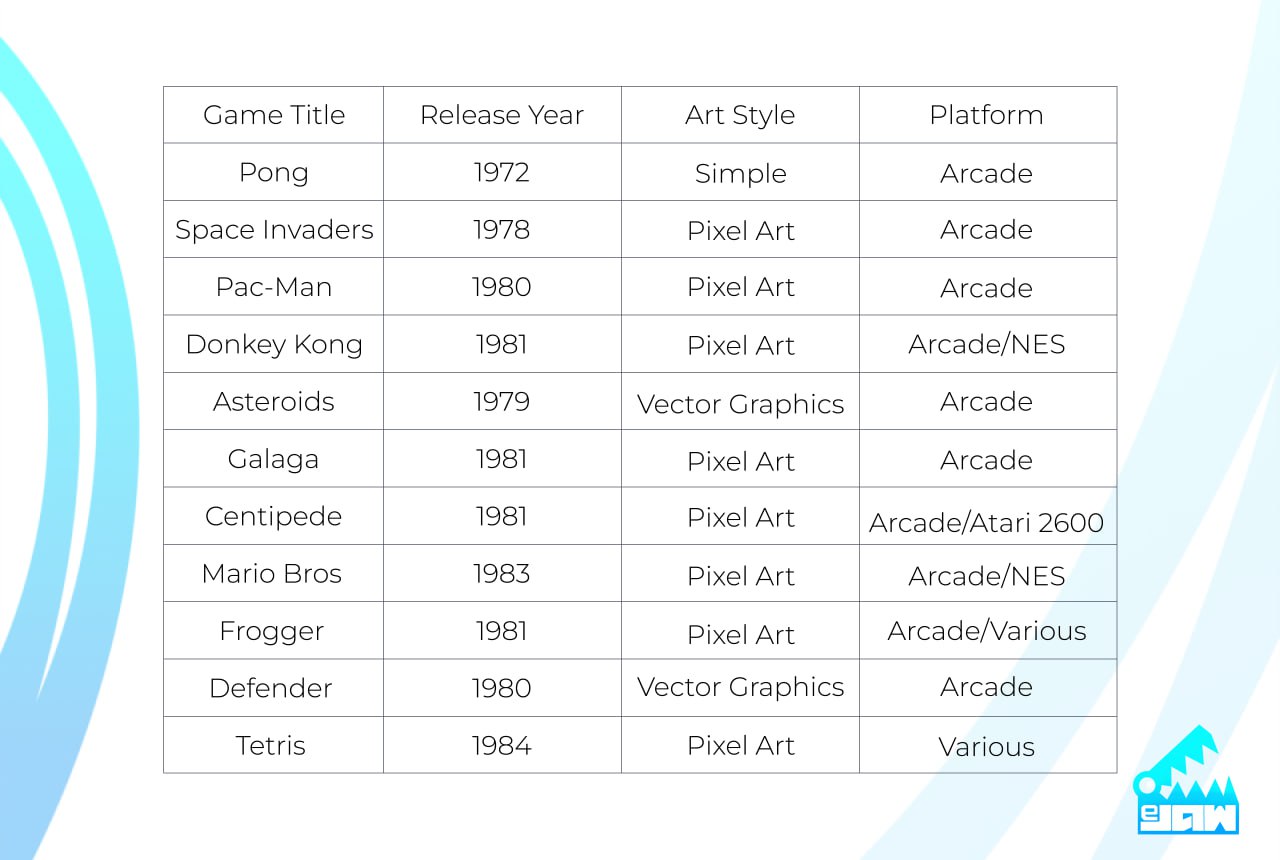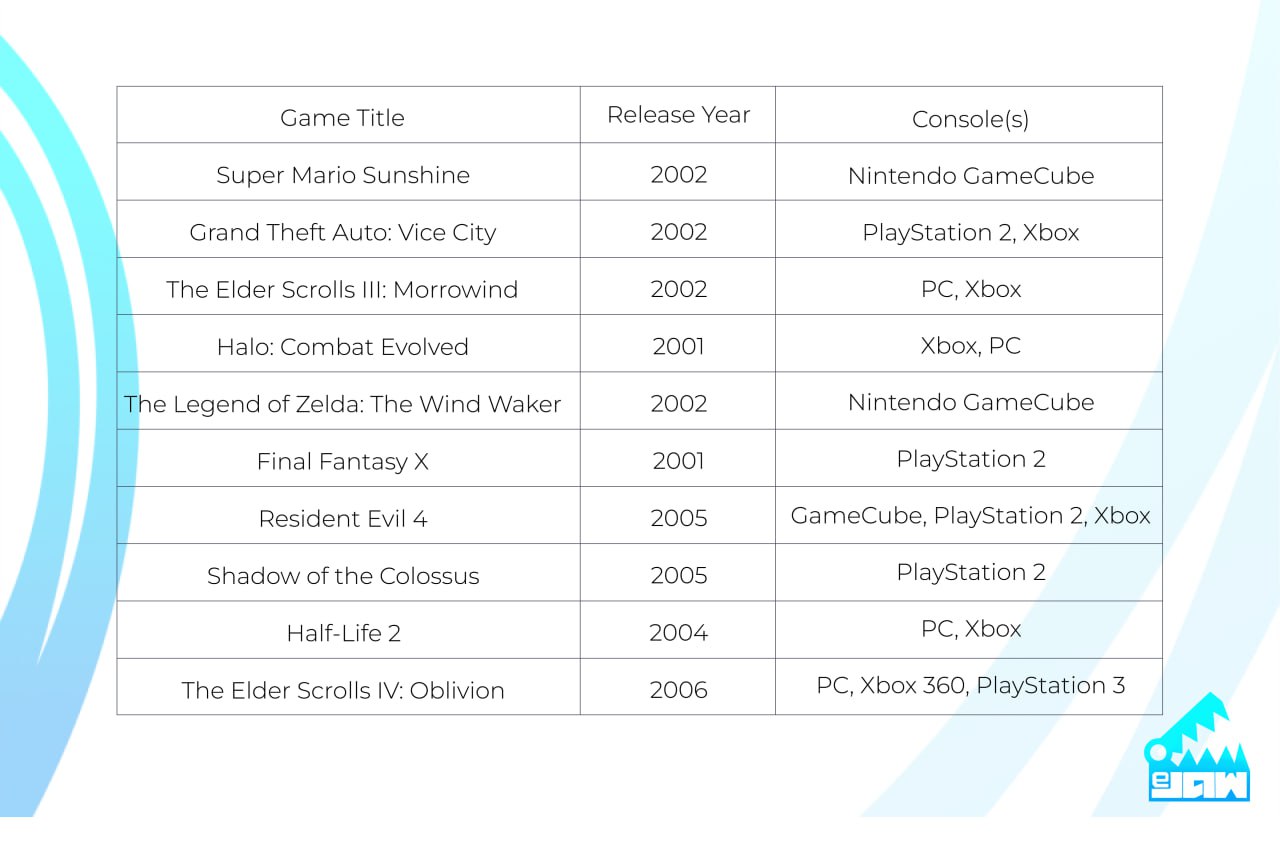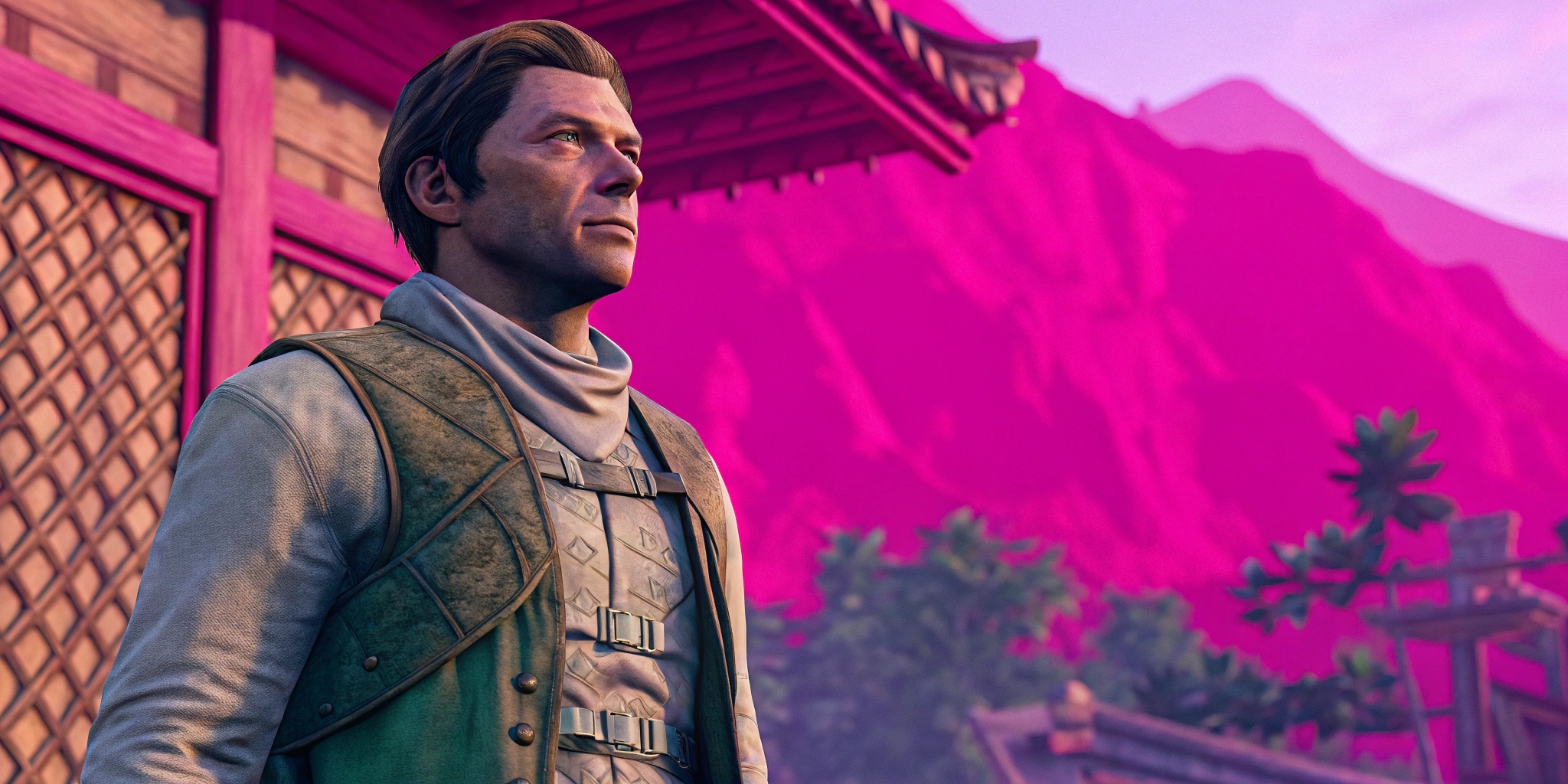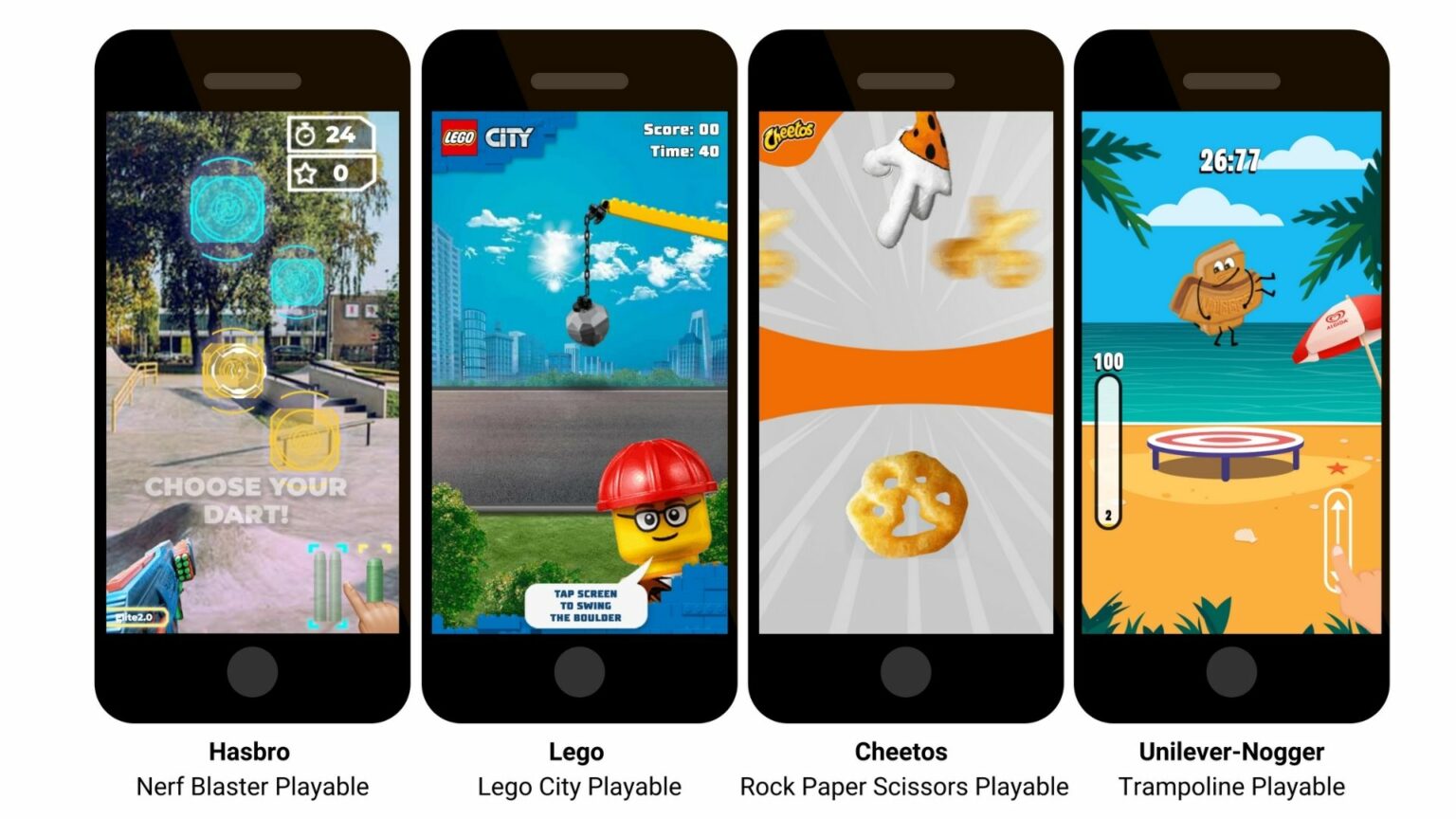It is well-known that video games have had a significant influence on culture. Video games have influenced our thinking about art, narratives, and even the manner in which we communicate with one another in ways that go beyond simple amusement. Due to their long history of development and diverse creative process, video games have become much greater than mere amusement and are now regarded as art.
Although they are a relatively recent phenomenon, video games have existed since the dawn of the computer age. How has the video game business changed over the past couple of decades with the spread of games of all kinds? This Ejaw blog will examine the evolution of video game art styles from a purely recreational activity to a recognized topic of study in art history.
The question of whether games qualify as art is a hot topic of discussion. Some contend that studying this genre of art is crucial since video games are a sort of culture. Some would counter that the study of video games by the art world or by art critics is excessively sentimental.
The art style games are as diverse as they are common, and they offer a singular opportunity to examine key times in art history. Video games are ideally suited for broad consumption because of their accessibility as works of art. We will examine the notion that video games are evolving toward the status of art along with how they are influencing the course of art history.
What Is a Video Game Art Style?
Game art style is a seamless fusion of all the game’s visual elements, carefully matched to give players the impression of the intended ambiance.
Video game art styles are more than simply pretty pictures; they are a game’s essence and have a major impact on how the player interacts with it. Video game art styles are hugely important since they create the game’s atmosphere, draw players into it, and convey storylines and emotions. Players can be enthralled, engaged, and left with a lasting impression by using different game art styles.
This blog will travel through the history of video game art styles historically, charting their progression from the earliest days of crude pixel art to the complex, immersive 3D worlds of contemporary gaming. It will examine how changes in game aesthetics over time have been influenced by technology, creativity, and user expectations.
Throughout the article, we will delve into various eras, from the 8-bit pixelated charm of the ’80s to the 3D realism and stylization of the ’90s and early 2000s, right up to the diverse and experimental artstyle ideas embraced by indie developers in recent times. Additionally, we will examine the influence of technology, the relationship between art styles for games and different game genres, and the psychological impact of visuals on player engagement.
Join us on this video game art style guide as we uncover the captivating story of how the best video games art styles have evolved, each era leaving its unique mark on the gaming industry.
Early Days: The Birth of Video Game Art
Early video game visual styles appeared to be in their infancy between the late 1970s and early 1980s, reflecting the era’s technological constraints. These primitive art forms, while basic by today’s standards, laid the groundwork for what would develop into a rich and varied universe of video game aesthetics.
Pixel Art Style
Pixel art was among the most recognizable early art movements. Blocky, pixelated graphics were popular in this era’s video games, notably “Space Invaders” and “Pac-Man.” With pixel art, characters and objects were represented as small square dots, with each pixel adding to the final image. With games depending on simple forms and few colors, pixel art’s appeal lay in its simplicity. Although their video game style now looks simple, these games were revolutionary and extremely well-liked at the time.
That was in 1979.
Vector Graphics Art Style
Another early form of art was vector graphics, which can be found in titles like “Asteroids” and “Tempest.” Vector graphics used lines and geometric forms to generate images rather than using pixels. Compared to pixel art, this method produced smoother, more dynamic graphics. It was however restricted by the early hardware’s constrained graphical capabilities.
There were creative restrictions in these early 2D art style games. Game designers have to operate within strict memory and processing constraints due to hardware restrictions. Characters and objects as a result were frequently blocky and lacking in detail. There were few color options, which resulted in straightforward and occasionally monochromatic aesthetics. Furthermore, the range of emotions and tales that could be communicated just through pictures was constrained by the lack of sophisticated graphics capabilities.
Game Styles Reasons of Those Days
Technology limitations were a key factor in the development of these early art movements. Early arcade machines and video game consoles had little memory and computing capacity, thus design had to be kept simple. To create visually beautiful and recognisable gaming art styles, developers have to be inventive with their usage of pixels or vector lines. In essence, the early art forms emerged out of a need to create engaging games within the limitations of the existing technology.
These early art forms, despite their shortcomings, had a profound impact on the video game industry. They paved the way for the best video games art styles that would occur later in the video game industry by demonstrating the possibility for interactive storytelling and entertainment through visual mediums.
These games are notable for their contributions to the industry and their representative art styles:
These games represent the early days of video game art styles, where the technology was limited, but the creativity of developers led to some of the most iconic and enduring titles in gaming history.
8-Bit and 16-Bit Eras: The Rise of Pixel Art
An important turning point in the development of 2D game art styles occurred with the advent of the 8-bit and 16-bit eras in the world of video games. The popularity of home consoles and arcade machines with more modern hardware proliferated during these periods, which lasted from the late 1970s until the early 1990s. The art forms employed in video games were significantly impacted by this change in technology, with pixel art becoming a popular and dominant style.
The term “8-bit” describes the early gaming consoles and computers’ processing power. Despite having constrained graphical capabilities, these consoles—such as the Nintendo Entertainment System (NES), Sega Master System, and Commodore 64—could create vibrant and creative pixel art. Famous pixelated characters and worlds that are still appreciated today were created during the 8-bit period.
The prevalence of pixel art was one of this era’s most notable characteristics. Despite the hardware’s restrictions, game developers and artists came up with inventive ways to work within them to produce visually stunning games. With its distinctive aesthetic of simplicity and charm, pixel art allowed for expressive surroundings and figures.
A few of these games not only helped to define the time, but they also had a lasting impact on the gaming industry. Here are a few notable classics:
Super Mario Bros. (1985): This game introduced players to the colorful and imaginative world of the Mushroom Kingdom. Its pixel art style gave life to beloved characters like Mario and Luigi, and the game’s visuals remain iconic.
The Legend of Zelda (1986): A pioneering action-adventure game, “The Legend of Zelda” featured detailed pixel art that brought the fantastical land of Hyrule to life, setting the standard for future RPGs.
Mega Man (1987): The “Mega Man” series featured a distinctive pixel art style with unique character designs for each boss. This series became synonymous with precise platforming and memorable boss battles.
Final Fantasy (1987): The original “Final Fantasy” showcased the narrative potential of pixel art, creating a captivating fantasy world with intricate character sprites and spell animations.
Sonic the Hedgehog (1991): Sega’s answer to Mario, “Sonic the Hedgehog,” featured speedy gameplay and a vibrant pixel art world, making it an iconic title of the 16-bit era.
Pixel art, during the 8-bit and 16-bit eras, demonstrated the ability to convey complex narratives and emotions despite the limited graphical fidelity. Game developers leveraged the unique charm of pixel art to create engaging and memorable experiences that continue to resonate with players today. This era laid the foundation for the enduring appeal of pixel art in modern indie games and the nostalgia associated with classic titles from this period.
The 3D Revolution: Realism vs. Stylization
An enormous shift in video game visual styles was brought about by the switch to 3D graphics. It was a time of innovation as game designers investigated the use of realism and stylization to create realistic virtual worlds. This change from 2D vs 3D grapgics, which became well-known in the middle of the 1990s and persisted into the 2000s, had a significant impact on how games were aesthetically created and played.
From 3D Graphics to Realism
The development of more potent hardware, such as the Sony PlayStation, Sega Saturn, and Nintendo 64, allowed game designers to create three-dimensional environments and characters in unparalleled detail. Realistic art forms, distinguished by lifelike textures, intricate character models, and environments meant to resemble the real world, resulted from this. Realistically challenging games like “Final Fantasy VII” (1997) and “Metal Gear Solid” (1998) introduced gamers to dramatic storytelling and emotionally complex characters.
Contrasting Realistic Art Styles with Stylized Ones
At the same time, the 3D era saw the emergence of stylized art styles, which strayed from realism in favor of distinctive and frequently exaggerated aesthetics. For instance, cel-shading simulated the look of hand-drawn animation, lending landscapes and characters a cartoonish, comic book-like aspect. Cel-shading was used in games like “The Legend of Zelda: The Wind Waker” (2002) and “Jet Set Radio” (2000) to create unique, eye-catching worlds. These games showed that there are other ways to make visually appealing and engrossing experiences outside realism.
Groundbreaking Titles Pushing the Boundaries of 3D Art
During this time, a number of pioneering titles showed the versatility of the medium by pushing the limits of 3D art. One of the first 3D platformers, “Super Mario 64” (1996), is frequently credited with demonstrating the possibilities for colorful, imaginative 3D environments. The huge creatures in “Shadow of the Colossus” (2005) combined reality and stylization, inspiring awe and melancholy. Sumi-e ink art was used in “Okami” (2006) to combine traditional Japanese art with 3D surroundings, creating a stunning and distinctive experience.
The 3D revolution made it possible for video games to offer unprecedented levels of immersion and storytelling. While stylized art forms honored originality and individuality and frequently produced experiences that went beyond the bounds of reality, realistic art styles sought to create cinematic experiences that could compete with movies. These various 3D art methods have persisted in developing and coexisting, providing players with a rich tapestry of visual styles to discover in the ever expanding world of video games.
The Indie Renaissance: Diverse Art Styles and Experimentation
In the history of video game art, the advent of the independent game movement was a watershed event. This era, which picked up steam in the late 2000s and is still going strong today, promoted diversity and artistic experimentation while questioning established conventions and expanding the possibilities for gaming imagery.
The indie game movement, which is defined by tiny, independent teams or solitary developers, was instrumental in introducing new aesthetic forms to the gaming industry. In contrast to big studios with big budgets, independent developers frequently depended on inventiveness and distinctive artistic visions to stand out in a competitive market. An atmosphere of artistic diversity where unusual ideas were not only embraced but also praised was developed by this environment.
Indie Developers Experimented with Various Art Styles
Indie developers leveraged their creative freedom to experiment with a wide range of art styles. They didn’t feel bound by the need for photorealistic graphics and were more inclined to explore stylized, abstract, or minimalist approaches. For example, “Braid” (2008) utilized hand-painted, dreamlike visuals that complemented its time-manipulating gameplay. “Limbo” (2010) embraced stark black and white silhouettes, creating an eerie, atmospheric experience. “Fez” (2012) introduced an isometric perspective with charming 2D pixel art in a 3D world, offering a unique and visually captivating puzzle platformer.
Indie Games with Unique Visuals and Critical Acclaim
Several indie games gained critical acclaim for their distinctive art styles, proving that creativity could shine even in the absence of blockbuster budgets. “Journey” (2012) by Thatgamecompany presented players with a visually breathtaking desert landscape and mysterious robed figures, evoking a sense of wonder and exploration. “Cuphead” (2017) harked back to the golden age of animation with hand-drawn, 1930s cartoon-inspired visuals, creating a visually striking and challenging run-and-gun game.
The Influence of Technology: From HD to VR
Technological advancements have had a profound impact on the evolution of art styles in video games. From the transition to high-definition (HD) graphics to the emergence of virtual reality (VR) gaming, these innovations have expanded the possibilities for visual storytelling and immersion.
The shift to HD graphics marked a significant milestone in gaming. HD displays offered greater resolution and color depth, enabling artists to create more detailed and visually stunning worlds. Game characters became more lifelike, and environments gained depth and richness. This advancement encouraged developers to embrace realism but also allowed for a wider range of art styles, from the painterly aesthetics of “Okami HD” (2012) to the gritty, post-apocalyptic realism of “The Last of Us” (2013).
With each generation of gaming hardware, the capabilities of consoles and PCs have expanded, granting artists and designers more creative freedom. Improved processing power and graphics capabilities enable realistic physics simulations, dynamic lighting, and complex particle effects. These advancements translate into more immersive experiences for players. For instance, games like “Red Dead Redemption 2” (2018) offer breathtakingly detailed open worlds where players can become fully immersed in the environment, from the swaying grass to the intricate facial expressions of characters.
Providing Examples of Games Leveraging Cutting-Edge Technology for Art: The advent of VR has taken immersion to a new level. Games like “Half-Life: Alyx” (2020) demonstrate how VR technology can provide players with a heightened sense of presence in a virtual world. The art style here combines realism with interactive elements that make players feel as if they’re inhabiting the game’s environment.
Additionally, ray tracing technology, as seen in titles like “Cyberpunk 2077” (2020), allows for advanced lighting and reflections that bring a new level of realism to virtual worlds. This technology enriches the artistry of these games by providing environments that feel more like living, breathing spaces.
Challenges and Opportunities in Modern Game Art
Here are the challenges modern game developers face in choosing and executing art styles.
| Challenges in Modern Game Art | Opportunities for Innovation and Creativity |
| 1. Technical Constraints: High-definition graphics and realistic art styles demand more computing power, which can be a challenge for indie developers with limited resources. | 1. Diverse Art Styles: Developers can experiment with various art styles, from retro pixel art to abstract minimalism, catering to different player preferences and budget constraints. |
| 2. Resource Demands: Creating detailed 3D assets and textures can be time-consuming and expensive, especially for small teams. | 2. Procedural Generation: Tools and algorithms for procedural generation allow for the creation of vast, unique worlds with less manual asset creation, saving time and resources. |
| 3. Artistic Direction: Balancing realism with stylization and ensuring that the art style complements the gameplay and narrative can be a complex creative challenge. | 3. Storytelling Through Art: Artistic choices can enhance storytelling; games like “Gris” and “Oxenfree” use art to convey emotion and narrative, pushing the boundaries of interactive storytelling. |
| 4. Player Expectations: Players have come to expect high-quality visuals, which can put pressure on developers to meet these expectations. | 4. Augmented Reality (AR) and Virtual Reality (VR): AR and VR offer new frontiers for artistic expression, enabling immersive and interactive experiences that break free from traditional screens. |
| 5. Art Direction vs. Technical Realization: Bridging the gap between an artist’s vision and the technical limitations of hardware and engines can be challenging. | 5. Collaborative Tools: Game engines like Unreal Engine and Unity offer powerful tools for artists and designers to work together seamlessly, fostering collaboration and efficient asset integration. |
| 6. Player Engagement: Captivating players visually is crucial, but maintaining their engagement throughout the game requires thoughtful design. | 6. Accessibility: Art can be used to enhance accessibility features, making games more inclusive and reaching a broader audience. |
| 7. Art Style Longevity: Striking a balance between timeless art styles and staying current with technological advancements can be a challenge. | 7. Cultural Diversity: Diverse art styles can represent various cultures and perspectives, enriching the gaming landscape and appealing to a global audience. |
Modern game art presents both challenges and exciting opportunities for developers. By embracing diverse art styles, leveraging technological innovations, and focusing on storytelling through visuals, game creators can navigate these challenges and continue pushing the boundaries of artistic expression in the gaming industry.













